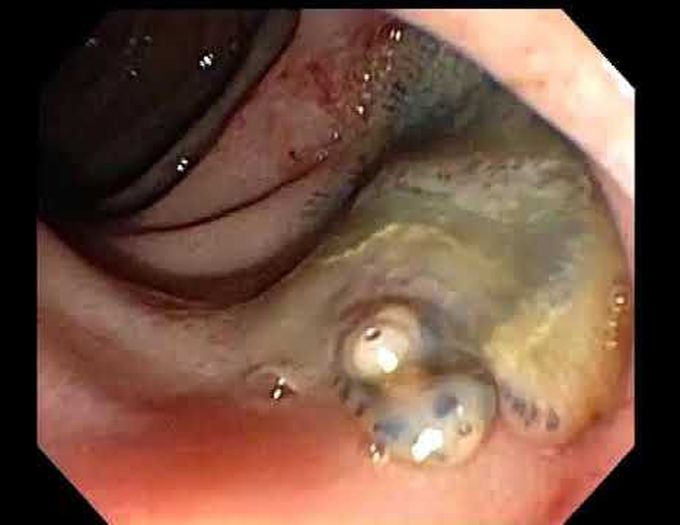


Liver Fluke
A 40-year-old man presented to the emergency department with fatigue that had progressively worsened over a period of 3 months. He had recently emigrated from Mexico, where he had worked on a farm and eaten raw watercress. Examination revealed pallor of the oral mucosa. Laboratory studies showed severe anemia, an alkaline phosphatase level of 342 U per liter (reference range, 40 to 130), and an absolute eosinophil count of 1400 cells per cubic millimeter (reference range, 0 to 400). Ultrasonography of the abdomen revealed intrahepatic biliary ductal dilatation, and magnetic resonance cholangiopancreatography revealed a hilar stricture. Endoscopic retrograde cholangiopancreatography was then performed, and large flatworms were visualized emerging from the major duodenal papilla (see video). Worms were extracted and identified as the common liver fluke, Fasciola hepatica. Fasciola eggs in the feces of host animals (commonly sheep) contaminate fresh water; the larvae mature in snails and attach to vegetation. After the parasites are ingested by humans, they penetrate the intestine and invade the hepatobiliary tree. After treatment with blood transfusion and triclabendazole, the patient’s fatigue abated. Within 1 month, the patient’s anemia and eosinophilia resolved, and his elevated alkaline phosphatase level normalized.
This is awful, we always try to educate people and warning them not to eat any uncleaned food, don't eat until you wash the things you eat no matter what they are vegetables or fruit or any, keep yourself protected!.

